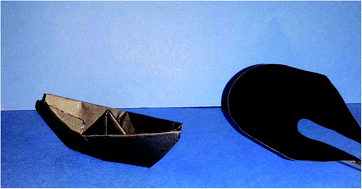Polyhydroxylated few layer graphene for the preparation of flexible conductive carbon paper†
Abstract
Electrically conductive flexible carbon papers were prepared, based on hydroxyl functionalized few layer graphene (G-OH). G-OH was obtained from the reaction of KOH with nanosized graphite with a very high surface area (HSAG), greater than 300 m2 g−1, and with high shape anisotropy, with the help of mechanical and thermal energy. Wide angle X-ray and Raman analyses showed that the core of G-OH had the structure of infinite and ideal graphene layers and that the interlayer distance between the few stacked graphene layers was the same as in pristine HSAG. Hydroxyl groups were thus essentially located in peripheral positions. High resolution transmission electron microscopy revealed the presence of graphene aggregates made by a number of layers as low as 6. Stable water suspensions were obtained, with concentrations up to 4 mg mL−1. Mild centrifugation of such suspensions had interesting efficiency as a method for producing few layer graphene: about 35% by mass of pristine HSAG was isolated as few layer graphene from supernatant suspensions. Flexible and electrically conductive carbon papers were prepared by coating a paper support with a G-OH water suspension. This work demonstrates that carbon papers can be prepared without adopting the traditional oxidation–reduction procedure, avoiding harsh reaction conditions, dangerous and toxic reagents, solvents and catalysts.


 Please wait while we load your content...
Please wait while we load your content...